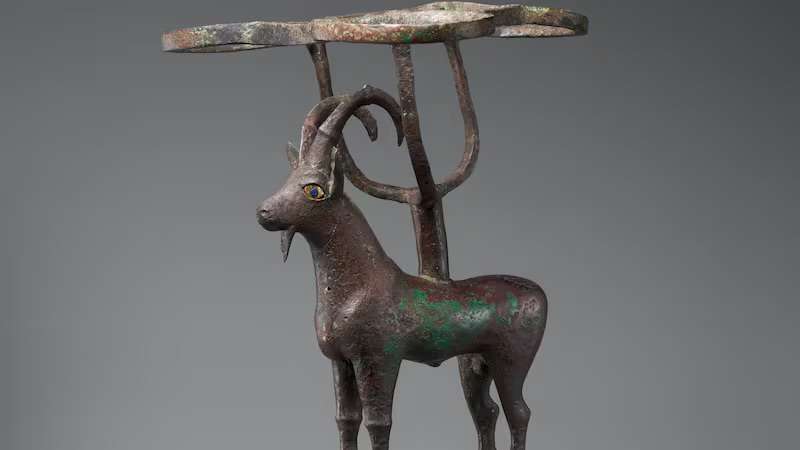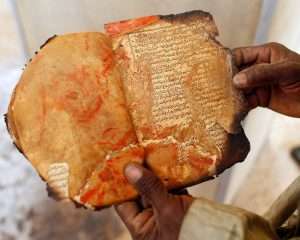US museum returns 4,500-year-old Iraqi artefact

A Mesopotamian statue of an ibex has been repatriated to Iraq from New York’s Metropolitan Museum of Art, The National reported on October 1st. The return comes as a result of the nation’s campaign to retrieve national treasures, and the museum’s Cultural Property Initiative.
The copper statue, officially named “Vessel Stand with Ibex,” dates back more than 4,500 years, and depicts a wild goat with curled horns. It is inflated with shell, the rare rich lapis lazuli and a green oxidation patina. To Kim Benzel, the West Asian art curator at the Met, the piece is an early example of the “hollow core lost-wax technique”, a process in which a molten metal is poured into a mould created from a wax model.
The Sumerians, who inhabited the region between the Tigris and the Euphrates in the Early Dynastic Period of Mesopotamia, had a deep ritual culture. It is possible that the animal represented in the sculpture was used in one of such rituals, navigating between worldly and spiritual symbols.

Illegal archeological digs have affected unstable and war-torn areas for centuries, extracting vital elements of colonised cultures around the world. In Iraq, instability following the 1991 Gulf War and Saddam Hussein’s regime contributed to the mismanagement of archeological sites, which were looted continuously. In 2003, with the US invasion that led to the end of the regime, the Iraqi National Museum was invaded by looters and priceless artifacts were stolen.
In the past few years, Iraq has campaigned actively for the repatriation of stolen items from its cultural sites. More than 17,000 objects were returned from the United States in 2021, including Mesopotamian tablets and seals previously displayed at the Museum of the Bible and Cornell University.
The Metropolitan Museum has also made efforts to return stolen objects to their places of origin. In 2023, the museum launched its Cultural Property Initiative, under which several artifacts of the collection have been repatriated to their home countries.
The ibex sculpture was sent to Munich, Germany, for scanning in a specialised lab, as part of a collaboration between the Met and Iraq to conduct further research on the hollow core lost-wax technique. It is one of the oldest examples of the Mesopotamian application of the technique to create animal figures — which contributed to the methods used today in the creation of large and complex metal structures. After contributing to research, the ibex will return home to Iraq.
The National, Maghrebi.org
Want to chase the pulse of North Africa?
Subscribe to receive our FREE weekly PDF magazine










